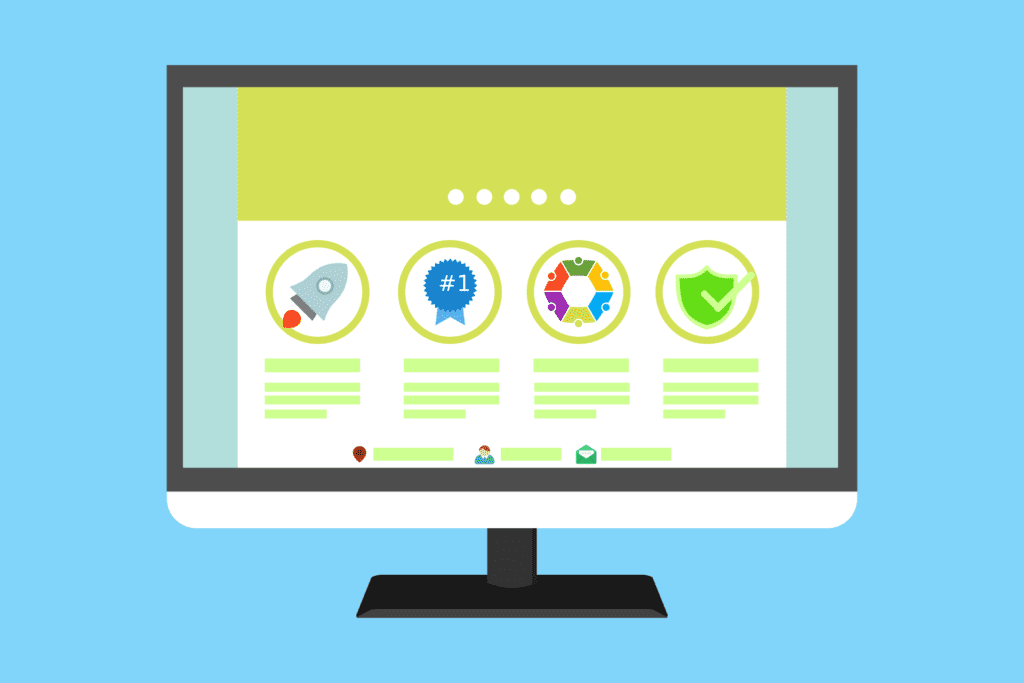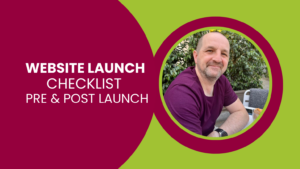You’ve finished designing your brand new website, it looks amazing and you’ve added all the pages you’ll need to start with. But what things do you need to consider when launching it? There’s a lot to think about for a successful website launch, from which day you set it live to how to announce it to small things like checking everything’s spelt correctly. Our guide to the ins and outs of launching a new website will help your launch run smoothly.
What technical things do I need to consider?
Before you launch your new website, you need to make sure that Google Search Console, Google Analytics, Google Tag Manager and any other data collection tools are all set up and ready to go. If these aren’t set up properly before you launch your site, then you might find that you miss some data collection which could mean your reports don’t give you all the information you need about how your website is performing in its early days.
Once you’ve launched, you should also crawl the site using a tool like Semrush or Screaming Frog to see if there are any issues that it reveals that you can fix. You should also make a site map and upload it to the search engines to help them crawl and index your site more efficiently.
What if I’m replacing an old site?
If you’re replacing an old website, you should make sure that you’ve backed it up and done a full site crawl before you retire it. This gives you a full record of your old site, as well as knowledge of the structure which you’ll want to take forward into your new site. You’ll also need to redirect any traffic or crawlers from the old site to the new one with 301 redirects. You also need to ensure the domains A or CNAME records are updated to point to the new server.
What should I check when it comes to content?
You should check all of your content is error-free in terms of spelling and grammar to give the best impression possible, and you should have a few new pieces of content ready to go which you can use to help promote your new site in the early days. Everything should be in line with the house style and brand, both for consistency and to look as professional as possible.
Recent Web Posts
Something else you need to check includes making sure that all placeholder text (like lorem ipsum) has been replaced with content or deleted. You should also check that your pages are optimised for the keywords you’ve chosen.
You should make sure all of your pages have meta titles and descriptions, and that every image has an alt tag to ensure that they’re SEO optimised. Ensuring that these are the appropriate length and include your keywords will help your rankings and save you from having to go through and change them later, saving you time in the long run.
What do I need to test?
You should test everything before the site goes live – your conversion path’s functionality, user experience on desktop and mobile, any forms on the site, and all internal links. If any of these are revealed to be a problem, you can then fix them before the site goes live and they become an issue for your users.
What’s the best day to launch a new website?
Although there are seven days in a week, less than half of them are suitable for launching a website. Friday, Saturday and Sunday are bad days because you probably won’t have everyone who needs to be keeping an eye on the launch available – the developers, support from your site’s hosts and yourself. It also doesn’t give you much time to fix any issues that arise. Thursday is possible but puts you on a much tighter schedule, so ideally, you’d launch your new website on Tuesday or Wednesday. This gives you Monday to prepare for it, and the rest of the week to fix any problems and run more tests if you need to.
How do I announce the launch?
Use social media and your current mailing list to your advantage when announcing the launch of your new website. Before the site launches, announce it slowly on social media by creating intrigue with posts that hint at a change before the big announcement and launch. You can also create fun graphics that engage your audience, like having a daily countdown. Once you’ve launched your website, announce it multiple times and show off different bits of your website that will help your audience get to know you more. You should also announce your new site in an email newsletter – this clues in your existing clients so they don’t get confused when they next visit your site. You may also want to consider looking into digital PR to help promote the launch of your new website.
Is there anything else I need to consider?
Your site needs to comply with legal requirements, so ensure that it does before you launch it. This includes data privacy laws and security laws, especially if you’re an eCommerce store storing users’ credit card information.
Summary
Launching a new website is an exciting time, but you can’t let the excitement get away from you. You have to remember to test everything, pick the right day to launch it, set up all the analytics, proof your pages and submit your sitemap to the search engines. You also need to check you’ve complied with legal requirements, backed up your old site (if applicable), and built up the hype on social media and informed your clients via email before launch day.
Remember, we’re a web design agency. So if you’re looking to launch a new site get in touch today.










